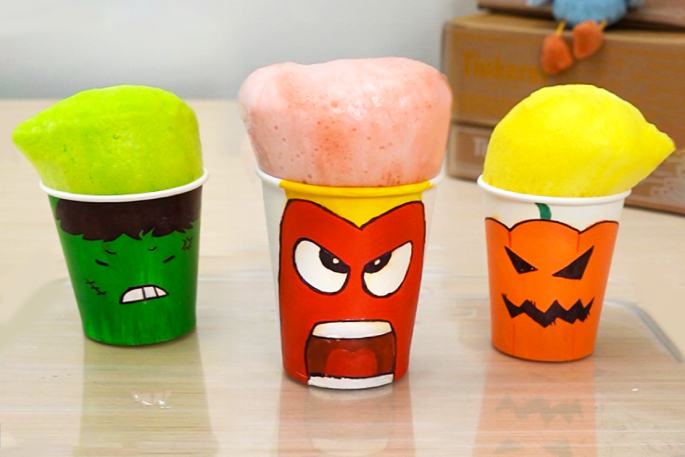The Angry Cup
Stem Activities

Ages: 6-8

Less than 30 minutes

Grownup needed
You'll never guess how many amazing science experiments you can do with simple kitchen ingredients like baking soda and vinegar. This experiment brings angry emotions to life in a way that will amaze both you and your children!
Materials Needed
- Three paper cups
- Baking soda
- White vinegar
- Measuring cup
- Egg white
- Food colouring
- Markers
- Paintbrushes
- Paint
- Palette
- Mixing stick
- Spoon

Step-by-step tutorial
Take the paper cups and decorate them with your favourite characters or patterns using paint brushes, paint, and markers.

Once the cups are dry, pour one egg white into each cup.

Add 5 drops of your chosen food colouring to the cup with the egg white.

Add 1 tablespoon of baking soda to the cup.

Use a spoon or mixing stick to thoroughly combine the egg white, food colouring, and baking soda.

Measure out 50 ml of white vinegar, quickly pour it into the cup, and wait patiently for the reaction.

Watch as the mixture in the cup reacts with the vinegar, rapidly expanding due to the acid-base reaction.

Repeat the steps with the remaining cups, trying different amounts of baking soda and vinegar to see which cup gets the "angriest"!

The Science Behind It:
This is a classic acid-base chemical reaction. When baking soda (sodium bicarbonate) comes into contact with vinegar (acetic acid), they react to produce carbon dioxide.
Why add egg white? Egg whites contain lots of protein, especially albumin. When egg white combines with the gases from the acid-base reaction, the albumin undergoes physical and chemical changes that help create more stable and fluffy foam.

 STEM Activities
STEM Activities Artistic Adventures
Artistic Adventures Playful Learning
Playful Learning The Recipe Repository
The Recipe Repository  Nature Explorations
Nature Explorations












